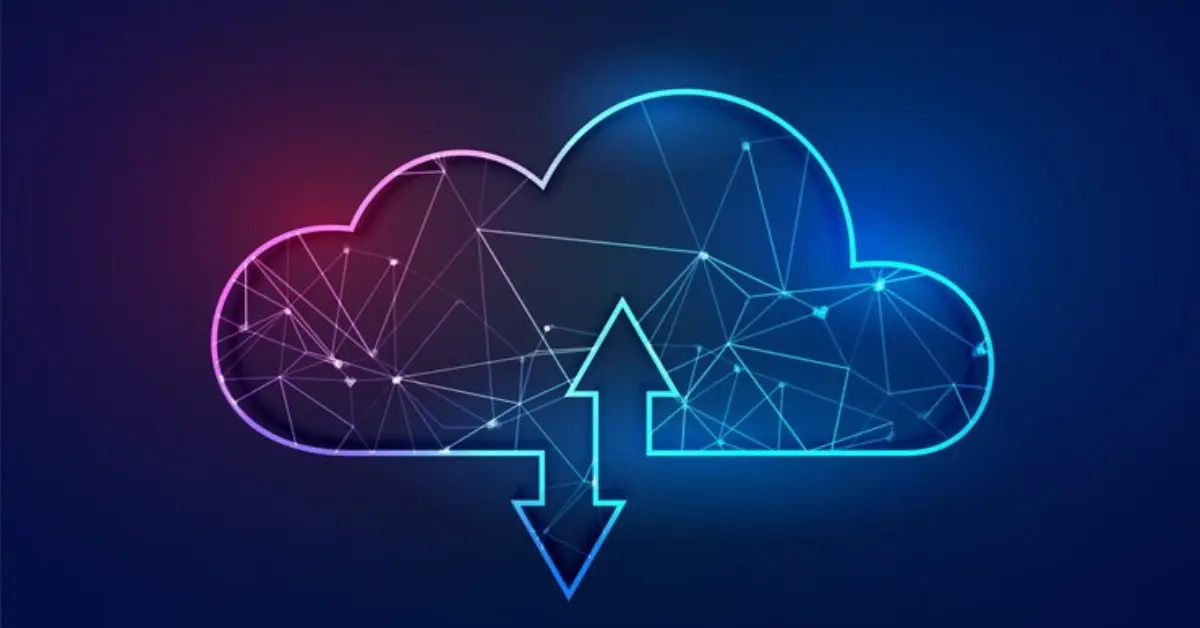Introduction
In the ever-evolving landscape of technology, cloud computing has emerged as a cornerstone, revolutionizing the way businesses and individuals approach IT solutions.
The term “Cloud Computing” is more than just a buzzword; it’s the backbone of modern Information Technology (IT), driving innovation and efficiency across various sectors.
This article delves into how cloud computing has become the pivotal force in reshaping IT, highlighting its benefits, applications, and future prospects.
What is Cloud Computing?
Cloud computing is a technology that allows individuals and organizations to access and use computing resources (such as servers, storage, databases, networking, software, analytics, and intelligence) over the internet, often referred to as “the cloud.” This enables on-demand availability of computer system resources, especially data storage and computing power, without direct active management by the user.
Key characteristics of cloud computing include:
- On-demand Self-service: Users can automatically provision computing capabilities, such as server time and network storage, as needed without requiring human interaction with each service provider.
- Broad Network Access: Capabilities are available over the network and accessed through standard mechanisms that promote use by heterogeneous thin or thick client platforms (e.g., mobile phones, laptops, and PDAs).
- Resource Pooling: The provider’s computing resources are pooled to serve multiple consumers using a multi-tenant model, with different physical and virtual resources dynamically assigned and reassigned according to consumer demand.
- Rapid Elasticity: Capabilities can be elastically provisioned and released, in some cases automatically, to scale rapidly outward and inward commensurate with demand. To the consumer, the capabilities available for provisioning often appear to be unlimited and can be appropriated in any quantity at any time.
- Measured Service: Cloud systems automatically control and optimize resource use by leveraging a metering capability at some level of abstraction appropriate to the type of service (e.g., storage, processing, bandwidth, and active user accounts). Resource usage can be monitored, controlled, and reported, providing transparency for both the provider and consumer of the utilized service.
Types of Cloud Computing:
- Infrastructure as a Service (IaaS): Provides basic computing infrastructure: servers, storage, and networking resources.
- Platform as a Service (PaaS): Offers an environment for developers and companies to create, host, and deploy applications, saving developers from the complexities of the infrastructure (setting up, managing, and operating).
- Software as a Service (SaaS): Delivers software applications over the internet, on-demand and typically on a subscription basis. With SaaS, cloud providers host and manage the software application and underlying infrastructure and handle any maintenance, like software upgrades and security patching.
- Function as a Service (FaaS): A type of cloud computing service that allows users to develop, run, and manage application functionalities without the complexity of building and maintaining the infrastructure typically associated with developing and launching an app.
Cloud computing can be deployed in different models:
- Public Cloud: Services are delivered over the public internet and shared across different organizations.
- Private Cloud: The cloud infrastructure is exclusively used by a single organization, offering more control over data, security, and compliance.
- Hybrid Cloud: Combines both public and private clouds, allowing data and applications to be shared between them.
Cloud computing has revolutionized how businesses and individuals use technology, offering scalability, cost-effectiveness, and flexibility in how computing resources are utilized and managed.
The Role of Cloud Computing in Modern IT
Cloud computing has revolutionized the way IT is approached, managed, and consumed in the modern era. Its role is multifaceted and continues to evolve, impacting various aspects of technology and business.
Here are some key points highlighting the role of cloud computing in modern IT:
- Flexibility and Scalability: Cloud computing provides unparalleled flexibility in IT resource management. Businesses can scale their IT infrastructure up or down based on demand without the need for significant capital investment. This scalability supports business growth and helps in managing fluctuating workloads.
- Cost Efficiency: One of the primary advantages of cloud computing is the reduction in capital and operational expenses. Businesses no longer need to invest heavily in physical hardware and its maintenance. They can opt for pay-as-you-go models, effectively turning capital expenditure into operational expenditure.
- Disaster Recovery and Data Backup: Cloud services have simplified the process of data backup and disaster recovery. They provide robust solutions for data storage, redundancy, and recovery, often distributed across various geographic locations for added security.
- Innovation and Speed to Market: Cloud platforms enable rapid development and deployment of applications. This accelerates the process of innovation, allowing businesses to bring products and services to market more quickly.
- Remote Work and Collaboration: Cloud computing has been instrumental in supporting remote work environments. It enables employees to access applications and data from anywhere, promoting collaboration and productivity regardless of geographical location.
- Enhanced Security: While security remains a critical concern, cloud providers invest heavily in security measures, often exceeding what an individual company can afford. This includes advanced encryption, identity management, and regular security updates.
- Integration and API Economy: The cloud supports a more integrated IT environment, allowing for easier connection between different systems and applications. The rise of APIs in the cloud has led to the creation of a more interconnected set of services and platforms.
- Artificial Intelligence and Machine Learning: Cloud platforms have democratized access to AI and ML technologies, providing businesses with the tools to implement advanced analytics, enhance customer experiences, and automate processes.
- Sustainability: Cloud data centers often operate more efficiently and with a lower carbon footprint than traditional data centers. This contributes to corporate sustainability goals, a growing concern for many businesses.
- Compliance and Governance: Cloud providers often comply with a range of international and industry-specific regulations, easing the burden of compliance for businesses and ensuring data is managed according to legal requirements.
- Edge Computing Integration: As IoT and mobile usage grows, cloud computing is increasingly integrated with edge computing. This involves processing data closer to where it’s generated, reducing latency, and improving response times.
- Hybrid and Multi-Cloud Strategies: Modern IT often involves a mix of on-premises, public, and private cloud environments. This hybrid approach allows businesses to leverage the strengths of each model while maintaining greater control over their IT infrastructure.
In summary, cloud computing has become a cornerstone of modern IT strategy, providing flexibility, efficiency, and new capabilities. It continues to evolve, shaping the way businesses operate and compete in an increasingly digital world.
Future Prospects and Trends in Cloud Computing
Cloud computing has continued to evolve rapidly, driven by advancements in technology and changes in business needs.
Here are some of the key future prospects and trends in cloud computing:
- Hybrid and Multi-Cloud Environments: The trend towards hybrid and multi-cloud strategies is expected to grow. Businesses are realizing the benefits of not being tied to a single cloud provider, enabling them to optimize their operations, enhance security, and improve disaster recovery strategies.
- Serverless Computing: Serverless architectures, where the cloud provider dynamically manages the allocation of machine resources, will gain more traction. This model allows developers to focus solely on their code and applications without worrying about servers, leading to increased efficiency and scalability.
- AI and Machine Learning Integration: Cloud platforms will continue to integrate more AI and machine learning services. These integrations allow businesses of all sizes to leverage advanced analytics and machine-learning models, providing insights and enhancing decision-making processes.
- Edge Computing: As IoT devices proliferate, edge computing will become increasingly important. This involves processing data closer to where it is generated (i.e., at the “edge” of the network), which reduces latency and bandwidth use. This is crucial for real-time applications like autonomous vehicles, smart cities, and industrial IoT.
- Quantum Computing in the Cloud: Though still in its nascent stages, quantum computing offered via the cloud will become more accessible. This could revolutionize various fields by providing unprecedented computational power to solve complex problems.
- Enhanced Security and Compliance: As cyber threats evolve, cloud providers will continue to enhance their security features. There will also be a greater focus on compliance and data sovereignty, especially with increasing regulations like GDPR.
- Sustainability and Green Computing: The environmental impact of data centers is a growing concern. Future trends will likely include more sustainable practices in cloud computing, such as using renewable energy sources and improving energy efficiency in data centers.
- Containerization and Kubernetes: The use of containers for deploying applications is becoming standard, with Kubernetes emerging as the leading orchestration tool. This trend simplifies deployment, scaling, and management of application containers, making cloud environments more efficient and flexible.
- Cloud Gaming and VR: The cloud is expected to play a significant role in the gaming industry, particularly in cloud gaming and VR experiences. This can democratize access to high-quality gaming experiences, removing the need for expensive hardware.
- 5G and Cloud Integration: The rollout of 5G will have a significant impact on cloud computing, offering faster speeds and lower latency. This will enhance mobile cloud computing experiences and enable new applications and services.
- Automation and Improved Cloud Management Tools: Automation in cloud computing, through AI and machine learning, will become more sophisticated, leading to more efficient management of cloud resources.
- Blockchain and Cloud Integration: Blockchain may find more applications in cloud computing, such as in enhancing security and transparency in cloud transactions.
- Customized Cloud Services: As competition among cloud providers intensifies, there will be a move towards more customized and industry-specific cloud solutions to meet the unique needs of different sectors.
- Cloud computing is poised to be dynamic and transformative, leveraging new technologies and approaches to address evolving business and technological needs.
- These trends suggest a continued shift towards more efficient, secure, and flexible computing solutions that will underpin many aspects of the digital economy.



